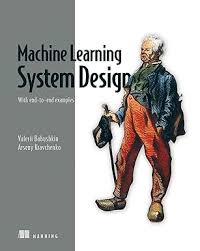Machine Learning System Design: Integrating PyTorch and Scikit-Learn with RAG-LLM
Machine learning system design has evolved significantly, incorporating advanced techniques and tools to create more efficient and powerful solutions. This white paper explores the integration of PyTorch and Scikit-Learn with Retrieval-Augmented Generation (RAG) and Large Language Models (LLMs), highlighting how IAS Research and Keen Computer can contribute to this field.
Key Components
PyTorch and Scikit-Learn Integration
PyTorch and Scikit-Learn are powerful libraries that can be combined to create robust machine learning systems[2]. This integration allows developers to leverage PyTorch's deep learning capabilities with Scikit-Learn's extensive machine learning toolkit. Key benefits include:
- Flexibility: Use PyTorch models within Scikit-Learn's ecosystem for tasks like cross-validation and hyperparameter tuning[2].
- Standardization: Easily standardize input features using Scikit-Learn's preprocessing tools in conjunction with PyTorch models[2].
- Pipeline Creation: Develop end-to-end machine learning pipelines that incorporate both libraries seamlessly[2].
RAG-LLM Architecture
Retrieval-Augmented Generation (RAG) combined with Large Language Models (LLMs) represents a cutting-edge approach in machine learning system design. This architecture enhances the capabilities of LLMs by incorporating external knowledge retrieval.
Key Features:
- Dynamic information retrieval
- Improved context understanding
- Enhanced accuracy in generating responses
RAG-Driven Generative AI
RAG-driven generative AI combines the capabilities of retrieval-augmented generation with generative models to produce more contextually relevant and informed outputs. By leveraging external knowledge sources, RAG-LLM architectures enable:
- Fact-Enhanced Content Creation: Generating responses enriched with real-world knowledge.
- Adaptive Learning Systems: Improving model responses based on the latest retrieved information.
- Domain-Specific Customization: Enhancing AI-driven applications in fields like law, healthcare, and finance.
Transformers for Natural Language Processing and Computer Vision
Transformers have revolutionized machine learning applications in both NLP and computer vision. The third edition of "Transformers for Natural Language Processing and Computer Vision" provides in-depth insights into their implementation and optimization[11]. Key applications include:
- Text Generation and Summarization: Advanced language modeling techniques improve automated content generation.
- Image Recognition and Processing: Transformers enhance object detection and segmentation in computer vision tasks.
- Multimodal Learning: Combining text and image inputs for comprehensive AI applications.
Use Cases
1. Intelligent Advertising Quality Assessment
IAS (Integral Ad Science) has developed a machine learning tool called Quality Attention that combines eye-tracking technology with machine learning for media quality assessment[3]. This use case demonstrates the potential for RAG-LLM systems in:
- Predicting ad impression effectiveness
- Analyzing user interaction patterns
- Optimizing ad placement and content
2. Natural Language Understanding and Generation
Researchers at the Institute for Advanced Study have made significant progress in developing machine learning models for language understanding[6]. RAG-LLM systems can further enhance these capabilities by:
- Improving sentence embedding techniques
- Developing more efficient and transparent alternatives to deep learning
- Enhancing language model training with minimal human interaction
3. Scalable ML Systems for Cloud Environments
AWS provides guidelines for designing well-architected machine learning systems in cloud environments[9]. RAG-LLM architectures can be integrated into these designs to:
- Enhance data processing and feature engineering
- Improve model training and evaluation processes
- Optimize prediction services and deployment strategies
4. Personalized Healthcare and Medical Diagnosis
RAG-LLM models can be applied in healthcare to improve diagnostics and treatment recommendations by combining patient data with real-time medical literature retrieval[10]. Key benefits include:
- Personalized treatment recommendations based on patient history
- Faster and more accurate diagnosis using multimodal data
- Reduction in medical errors by incorporating up-to-date research
5. Financial Fraud Detection and Risk Management
Financial institutions use machine learning for fraud detection and risk assessment. By integrating RAG-LLM with PyTorch and Scikit-Learn, banks and insurance companies can:
- Analyze transaction patterns for anomalies
- Use external financial reports to improve fraud detection accuracy
- Automate regulatory compliance checks by retrieving relevant legal frameworks
How IAS Research and Keen Computer Can Help
IAS Research (ias-research.com)
IAS Research can contribute to the development and implementation of RAG-LLM systems by:
- Advanced Algorithm Development: Leveraging their expertise in theoretical machine learning to create more efficient RAG-LLM architectures[6].
- Interdisciplinary Collaboration: Facilitating interactions between machine learning experts and researchers from diverse fields to drive innovation[6].
- Language Model Optimization: Applying their research on sentence embeddings and language understanding to enhance RAG-LLM performance[6].
Keen Computer (keencomputer.com)
Keen Computer can assist in the practical implementation and deployment of RAG-LLM systems by:
- System Integration: Helping businesses integrate RAG-LLM architectures with existing PyTorch and Scikit-Learn based systems.
- Performance Optimization: Tuning RAG-LLM systems for optimal performance in various hardware environments.
- Custom Solution Development: Creating tailored RAG-LLM solutions for specific industry needs, such as advertising quality assessment or natural language processing.
By leveraging the expertise of both IAS Research and Keen Computer, organizations can develop cutting-edge machine learning systems that combine the power of PyTorch, Scikit-Learn, and RAG-LLM architectures to solve complex real-world problems efficiently and effectively.
Citations:
[1] https://www2.eecs.berkeley.edu/Pubs/TechRpts/2017/EECS-2017-219.pdf
[2] https://machinelearningmastery.com/use-pytorch-deep-learning-models-with-scikit-learn/
[3] https://www.research-live.com/article/news/ias-launches-machine-learning-advertising-quality-tool/id/5121153
[4] https://github.com/alirezadir/machine-learning-interviews/blob/main/src/MLSD/ml-system-design.md
[5] https://sebastianraschka.com/blog/2022/ml-pytorch-book.html
[6] https://www.ias.edu/ideas/arora-machine-learning
[7] https://github.com/chiphuyen/machine-learning-systems-design
[8]https://www.reddit.com/r/learnpython/comments/v9nv0j/
should_i_start_with_scikit_learn_tensorflow_or/
[9] https://docs.aws.amazon.com/pdfs/wellarchitected/latest/
machine-learning-lens/wellarchitected-machine-learning-lens.pdf
[10] https://www.nature.com/articles/s41591-020-1123-7
[11] https://www.packtpub.com/product/
transformers-for-natural-language-processing-and-computer-vision-third-edition/9781803235161



